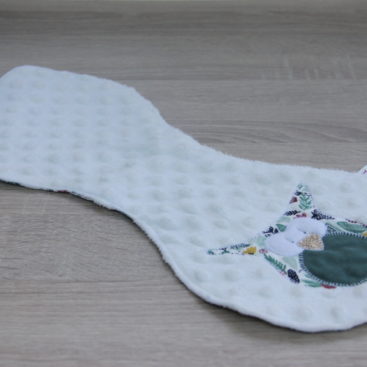Credit can mean either borrowing money or getting something of value, like a car, with the commitment to repay later and often with interest charged. It can also mean your ability to borrow or buy things on a credit contract. Janet Berry-Johnson, CPA, is a freelance writer with over a decade of experience working on both the tax and audit sides of an accounting firm. She’s passionate about helping people make sense of complicated tax and accounting topics. Her work has appeared in Business Insider, Forbes, and The New York Times, and on LendingTree, Credit Karma, and Discover, among others. Expenses are the costs of operations that a business incurs to generate revenues.
Working from the rules established in the debits and credits chart below, we used a debit to record the money paid by your customer. A debit is always used to increase the balance of an asset account, and the cash account is an asset account. Since we deposited funds in the amount of $250, we increased the balance in the cash account with a debit of $250. Depending on the type of account, debits and credits function differently and can be recorded in varying places on a company’s chart of accounts. This means that if you have a debit in one category, the credit does not have to be in the same exact one.
- The Ascent is a Motley Fool service that rates and reviews essential products for your everyday money matters.
- A credit account is an open account that a buyer has with a supplier or store, under which the buyer can make purchases and pay for them at a later date.
- For the more accessible route, a bank may be a better choice, but if you’re looking for more of a community-based experience, a credit union is best.
- Because the allowance is a negative asset, a debit actually decreases the allowance.
- In double-entry accounting, every debit (inflow) always has a corresponding credit (outflow).
Before we explain and illustrate the debits and credits in accounting and bookkeeping, we will discuss the accounts in which the debits and credits will be entered or posted. As you process more accounting transactions, you’ll become more familiar with this process. Take a look at this comprehensive chart of accounts that explains how other transactions affect debits and credits. Now, you see that the number of debit and credit entries is different. As long as the total dollar amount of debits and credits are equal, the balance sheet formula stays in balance.
The term debit comes from the word debitum, meaning “what is due,” and credit comes from creditum, defined as “something entrusted to another or a loan.” For example, a customer is granted $10,000 of credit on 30 day terms, which means that the customer can make purchases of up to $10,000 without having to pay the seller until 30 days have passed. Credit can also refer to the creditworthiness or credit history of an individual or a company—as in “she has good credit.” In the world of accounting, it refers to a specific type of bookkeeping entry.
What is a credit?
To keep a company’s financial data organized, accountants developed a system that sorts transactions into records called accounts. When a company’s accounting system is set up, the accounts most likely to be affected by the company’s transactions are identified and listed out. Depending on the size of a company and the complexity of its business operations, the chart of accounts may list as few as thirty accounts or as many as thousands. A company has the flexibility of tailoring its chart of accounts to best meet its needs.
Review activity in the accounts that will be impacted by the transaction, and you can usually determine which accounts should be debited and credited. Your decision to use a debit or credit entry depends on the account you’re posting to and whether the transaction increases or decreases the account. For example, if a business takes out a loan to buy new equipment, the firm would enter a debit in its equipment account because it now owns a new asset. Let’s take a look at the T-account of this long-term liability account.
When using T-accounts, a debit is on the left side of the chart while a credit is on the right side. Debits and credits are utilized in the trial balance and adjusted trial balance to ensure that all entries balance. The total dollar amount of all debits must equal the total dollar amount of all credits.
What are debits and credits?
A journal is a record of each accounting transaction listed in chronological order. Asset, liability, and equity accounts all appear on your balance sheet. Revenue and expense accounts make up the income statement (or profit and loss statement, P&L). As mentioned, debits and credits work differently in these accounts, so refer to the table below. Sometimes called “net worth,” the equity account reflects the money that would be left if a company sold all its assets and paid all its liabilities.
How Are Debits and Credits Used?
The definition of credit is the ability to borrow money with the promise that you’ll repay it in the future, often with interest. You might need credit to purchase a product or use a service that you can’t pay for immediately. Our partners cannot pay us to guarantee favorable reviews of their products or services. She secures a bank loan to pay for the space, equipment, and staff wages. Here are a few examples of common journal entries made during the course of business.
The Ascent is a Motley Fool service that rates and reviews essential products for your everyday money matters. The main difference is that invoices always show a sale, whereas debit notes and debit receipts reflect adjustments or returns on transactions that have already taken place. The term credit has its roots set in the latin word ‘creditum’ meaning “that which is entrusted or loaned” which also came from ‘credere’ which means to “trust or entrust”.
If you have credit but want to strengthen your score
Revolving credit involves a loan with no fixed end date—a credit card account being a good example. As long as the account is in good standing, the borrower can continue to borrow against it, up to whatever credit limit has been established. As the borrower makes payments toward the balance, the account is replenished.
Credit scores are one way that individuals are classified in terms of risk, not only by prospective lenders but also by insurance companies and, in some cases, landlords and employers. Anyone with a score of 800 or higher is considered to have exceptional credit, 740 to 799 represents very good credit, 670 to 739 is good credit, 580 to 669 is fair, and a score of 579 or less is poor.
This T-account has one credit for $100,000 and one debit for $500 leaving it with a carrying balance of $99,500. Debits and credits are recorded in your business’s general ledger. A general ledger includes a complete record of all financial transactions for a period controller vs cfo: 6 key differences to understand of time. Liabilities are obligations that the company is required to pay, such as accounts payable, loans payable, and payroll taxes. In fact, the accuracy of everything from your net income to your accounting ratios depends on properly entering debits and credits.
Besides his extensive derivative trading expertise, Adam is an expert in economics and behavioral finance. Adam received his master’s in economics from The New School for Social Research and his Ph.D. from the University of Wisconsin-Madison in sociology. He is a CFA charterholder as well as holding FINRA Series 7, 55 & 63 licenses. He currently researches and teaches economic sociology and the social studies of finance at the Hebrew University in Jerusalem.
Liabilities, revenues, and equity accounts have natural credit balances. If a debit is applied to any of these accounts, the account balance has decreased. For example, a debit to the accounts payable account in the balance sheet indicates a reduction of a liability. The offsetting credit is most likely a credit to cash because the reduction of a liability means that the debt is being paid and cash is an outflow. For the revenue accounts in the income statement, debit entries decrease the account, while a credit points to an increase in the account.
Now let’s assume that the company took out an additional loan for $30,000. The journal entry to record this transaction would debit cash and credit the long-term liabilities account for $30,000. Now the total credits would be $130,000 and the debits would be $500 leaving the account with a $129,500 credit balance at the end of the period. If you need to purchase a new refrigerator for your restaurant, for example, that would be a credit in your cash account because the money is leaving your business to purchase an item.












